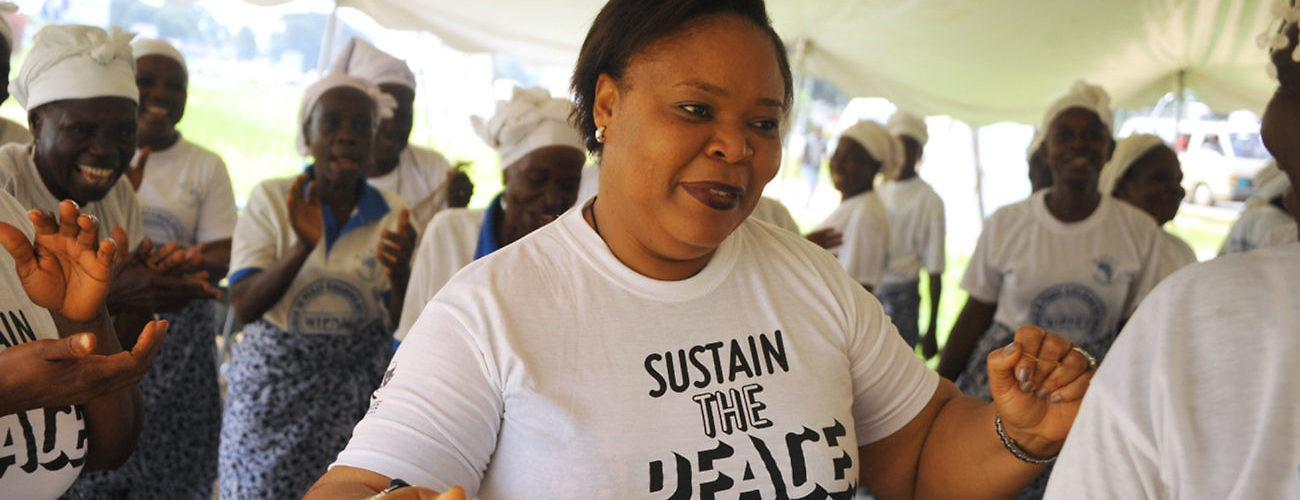Nobel Peace Prize laureate Leymah Gbowee, head of the Women in Peacebuilding Network (WIPNET), greets members of thegroup in Monrovia, Liberia, on October 5, 2017. (ZOOM DOSSO/AFP/Getty Images)
Prevention is generally viewed as a crisis management tool to address the destructive dynamics of conflict. The sustaining peace agenda challenges this traditional understanding of preventive action by shifting the starting point of analysis to what is still working in society—the positive aspects of resilience—and building on these.
The goal of this volume is to build a shared understanding of what sustaining peace and prevention look like in practice at the national and international levels. Many of its chapters were previously published as issue briefs that fed into a series of monthly, high-level conversations convened at IPI in 2016 and 2017.
The volume is divided into four parts. The first part explores the concept of sustaining peace and what it means in practice. The second applies sustaining peace to five areas: the Sustainable Development Goal on gender equality, entrepreneurship, human rights, local governance, and preventing violent extremism. The third part looks at sustaining peace and the United Nations, specifically UN peace operations and regional political offices. The final part looks at a specific country—the Gambia—through the lens of sustaining peace.










